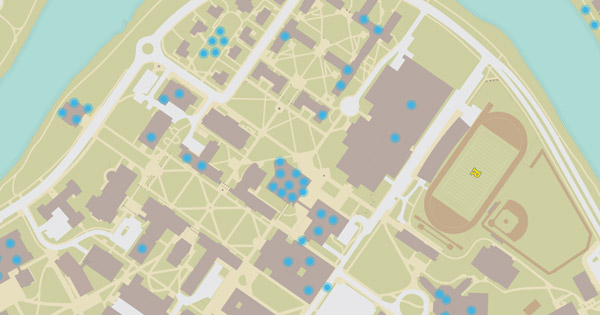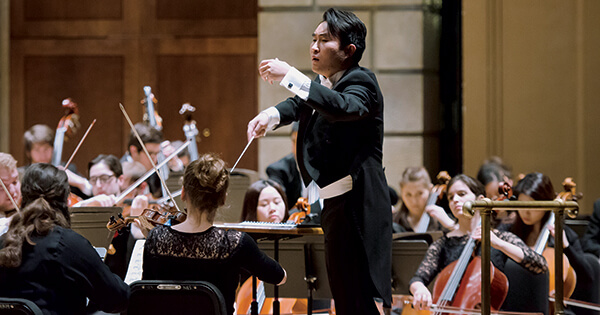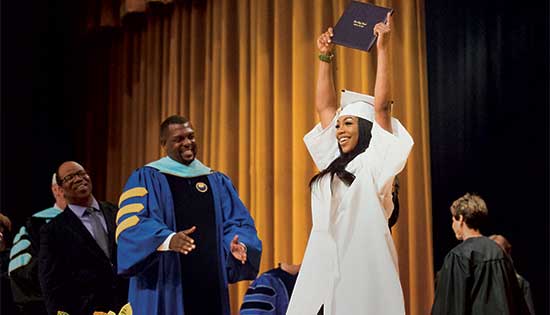Breaking boundaries with video games
Video games—played on computers, mobile devices, and consoles—generate more global revenue than the film or recorded music industries. But gaming has evolved beyond simple entertainment.
Recently, the University of Rochester hosted “Breaking Boundaries: Video Games in Teaching, Learning, Research, and Design,” a conference initiated by Stephanie Frontz, head of the Art and Music Library. The daylong event in the Humanities Center connected researchers, educators, scholars, and students from across the University, including the Warner School of Education, Arts, Sciences & Engineering, and the Medical Center, as well as Rochester Institute of Technology and The Strong museum.
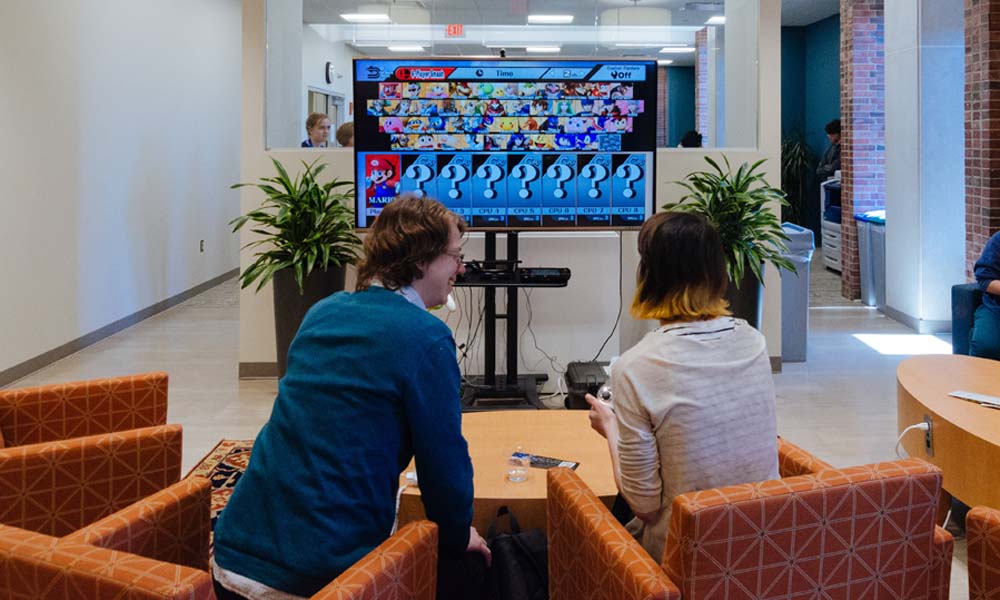
During April’s “Breaking Boundaries” event, participants had the opportunity to play video games in the Humanities Center. (University photo / Sofia Tokar)
Joseph Loporcaro, instructor in the undergraduate program in digital media studies, presented on the academic pursuit and merits of video games. He teaches DMS 110: From Pong to Pokémon Go: The Past, Present, and Future of Video Games, as well as DMS 120: Video Game Design. This summer, he is introducing a new course on journalistic writing about video games.
Loporcaro says he asks his students to examine the history and cultural contexts of video games. For example, what is it about Pac Man—“a circle with a wedge cut out of it”—that resonated with consumers in the 1980s? An assignment for his students, meanwhile, is to design a video game mascot that would appeal to an audience in the 1990s, the heyday of mascots like Nintendo’s Mario, Sega’s Sonic the Hedgehog, and Sony’s Crash Bandicoot.
Aside from their cultural significance, do video games aid or promote learning?
That’s a question researchers at the University’s Warner School of Education are exploring. Jayne Lammers, assistant professor of teaching and curriculum at the Warner School, and two Warner graduate students, Yu Jung Han and Kristana Textor, shared insights on informal learning in and around video games. In short, “There is more to learning than what is coded into a game,” Textor said. The act of “co-construction brings deep meaning to games”—and deep meaning can (although does not necessarily) translate into learning.
It wasn’t only University experts sharing their perspectives at the event. Eloise Oyzon, associate professor of interactive games and media at RIT, gave a TED Talk–style presentation on the future of gaming, noting that the use of consoles is expected to decrease as smartphones become increasingly ubiquitous and sophisticated.
In terms of breaking boundaries, Oyzon said, “What I’m seeing is that [students’] definition of games is changing. It used to be video games were just those things produced for consoles, usually first-person shooting games. But students today have expanded their notion of what games are to include casual games, mobile games, games deployed on the PC. It’s opening quite a bit.”
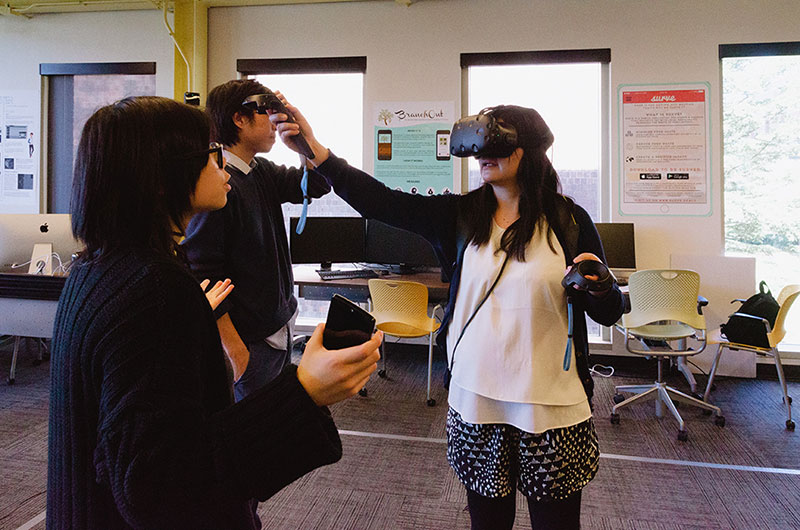
Students try out some virtual reality hardware in Rettner Hall. (University photo / Sofia Tokar)
Also opening up is the definition of a gamer. Oyzon is seeing more inclusion of characters that are not the typical white males, an encouraging step toward diverse representation in video games. But her main lesson was about collaboration: “Come play with us! Or if not at RIT, then play with each other.”
And play they did. In addition to hearing presentations and panel discussions, participants got to play video games in the Humanities Center and try out virtual reality technology in Rettner Hall.
Missed the event but want to learn more about using digital technology, including video games, for teaching and learning? Attend an upcoming Learning in the Digital Age (LiDA) Series discussion or join LiDA on Facebook.
-Sofia Tokar, April 2017



